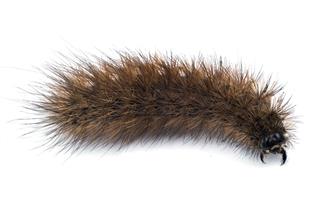
The caterpillar life cycle is explained in short in this article, along with some interesting facts about caterpillars.
The larval forms of moths and butterflies are generally known as caterpillars. Most caterpillars feed on plants while some are entomophagous, which means that they feed on insects. Caterpillars have a tubular body which is divided into segments.
Different Life Cycle Stages
The caterpillar is the second phase in the life cycle of a butterfly. The other phases include eggs (first phase), pupae (third phase), and the butterfly (fourth/final phase). The time taken for a butterfly’s life cycle to be completed could be anything from a single month to a complete year. Given below is the life cycle of a caterpillar in detail.
Egg Phase
This is the first phase in the caterpillar life cycle. The eggs have different shapes like round, cylindrical, oval, etc. They are generally laid on plant leaves. Females can lay eggs on stems too. Laying eggs on the leaves helps in obtaining food for the next phase (caterpillar) quite easily. Eggs are protected by a hard outer covering known as chorion. A thin coat of wax that is present along the chorion helps prevent the eggs from drying. The egg phase generally lasts for a few weeks. However, eggs that have been laid in the months of winter have to go through a resting phase. These eggs hatch when the spring season arrives.
Caterpillar Phase
Caterpillars are voracious feeders and they eat plant leaves. They pass through various phases of growth, known as instars. Apolysis is a process in which the caterpillar sheds its cuticle, an outer layer made of protein and chitin. Molting of the cuticle takes place at the end of every instar. By the time the last instar phase is reached, development of the wings begins to take place. The legs of butterfly caterpillars are of two types, i.e. true legs and pro legs. There are 3 pairs of true legs while the pairs of pro legs could be up to 6 in number. Caterpillars may have different body characteristics/features, for example, osmeteria, which produce chemicals for defense by means of eversion.
The second and third thoracic segments of the caterpillar’s body bear wing disks. The development of wing disks takes place in association with trachea, which are present at the base of the former. Wing disks grow quickly after the last instar phase. The haemolymph forces out the wings through the epidermis.
Pupal Phase
The pupa is an intermediate stage between the larvae and the adult butterfly. When caterpillars transform into pupae, they stop feeding and search for a substrate to perform the last molting. As the pupal stage approaches, the prothoracicotropic or PTTH hormone is produced. The wings undergo rapid mitosis and therefore require a lot of nutrients in this phase. To protect themselves from predators, the pupae produce certain types of sounds.
Adult/Butterfly Phase
The fully-developed form of the caterpillar is known as imago. Wings of butterflies which emerge from the pupal stage require some time to dry; it takes about 3-4 hours for the wings to dry completely. The wings need to be unfolded for the imago to fly properly.
Interesting Caterpillar Facts
Breathing in caterpillars takes place by means of spiracles, the openings present at the sides of the abdomen and thorax.
The total number of muscles present in the body of caterpillars is 4000. The head segment alone has 248 muscles.
Caterpillars have poor vision. The stemmata, which are six tiny eyelets present on both sides of the head, help in capturing images.
Some caterpillars are capable of detecting vibrations of specific frequencies. The Drepana arcuata caterpillar (Hook-tip moth) protects its silk nest by producing sound waves.
Few species of caterpillars are poisonous in nature; they can shoot poisonous acids for defending themselves.
The caterpillar life cycle which is explained above provides an insight into the interesting world of butterflies. There is a lot to learn about these tiny creatures. The information presented above is just a small part of it.














